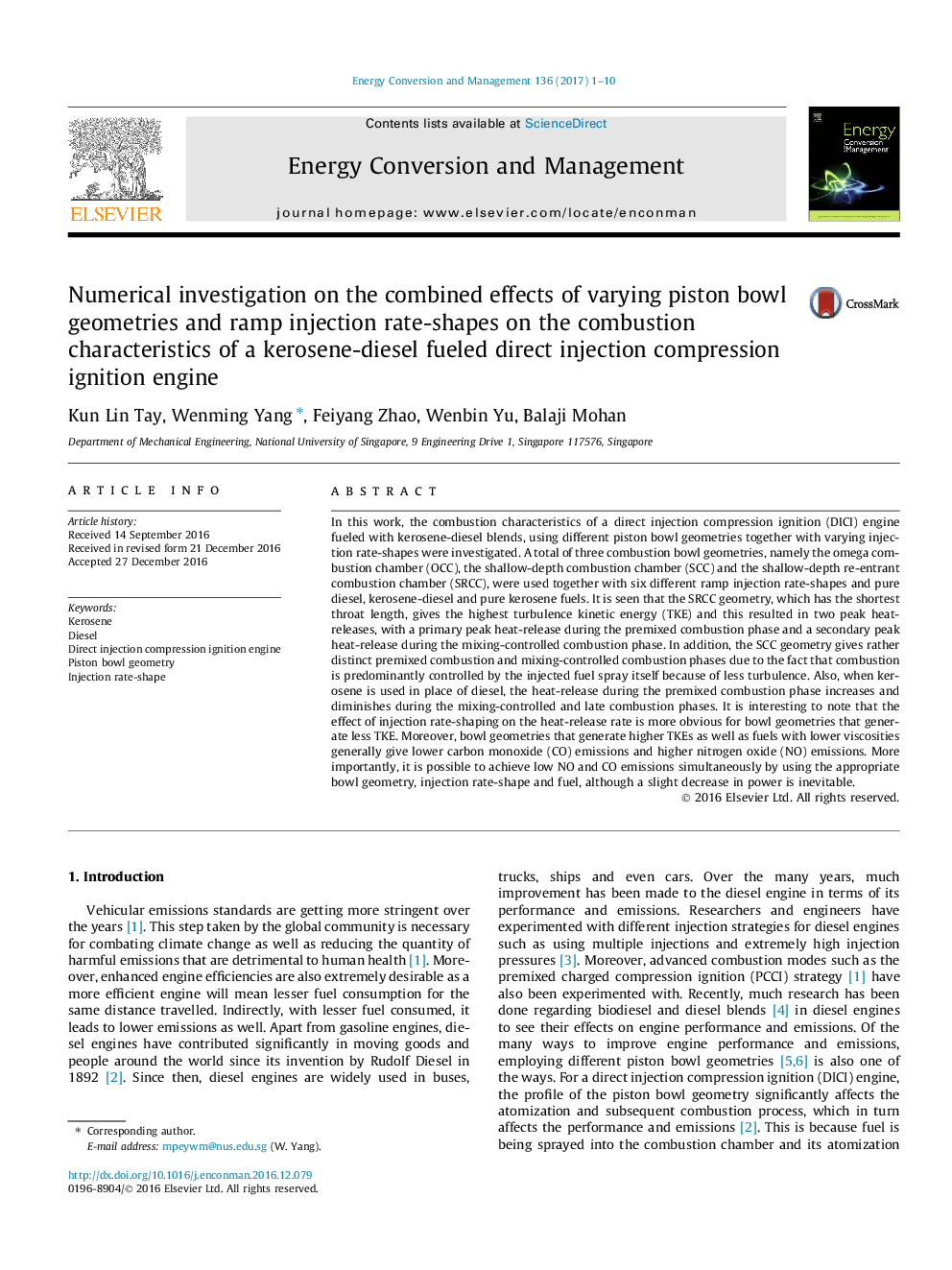| کد مقاله | کد نشریه | سال انتشار | مقاله انگلیسی | نسخه تمام متن |
|---|---|---|---|---|
| 5013152 | 1462826 | 2017 | 10 صفحه PDF | دانلود رایگان |
عنوان انگلیسی مقاله ISI
Numerical investigation on the combined effects of varying piston bowl geometries and ramp injection rate-shapes on the combustion characteristics of a kerosene-diesel fueled direct injection compression ignition engine
ترجمه فارسی عنوان
بررسی عددی در مورد اثرات ترکیبی هندسه کاسه پیستون مختلف و نرخ شکل تزریق رمپ بر روی ویژگی های احتراق یک موتور دیزل تزریق مستقیم تزریق نفت با دیزل
دانلود مقاله + سفارش ترجمه
دانلود مقاله ISI انگلیسی
رایگان برای ایرانیان
کلمات کلیدی
نفت سفید دیزل، موتور احتراق تزریق مستقیم تزریق، هندسه کاسه پیستون، سرعت شکل تزریق،
موضوعات مرتبط
مهندسی و علوم پایه
مهندسی انرژی
انرژی (عمومی)
چکیده انگلیسی
In this work, the combustion characteristics of a direct injection compression ignition (DICI) engine fueled with kerosene-diesel blends, using different piston bowl geometries together with varying injection rate-shapes were investigated. A total of three combustion bowl geometries, namely the omega combustion chamber (OCC), the shallow-depth combustion chamber (SCC) and the shallow-depth re-entrant combustion chamber (SRCC), were used together with six different ramp injection rate-shapes and pure diesel, kerosene-diesel and pure kerosene fuels. It is seen that the SRCC geometry, which has the shortest throat length, gives the highest turbulence kinetic energy (TKE) and this resulted in two peak heat-releases, with a primary peak heat-release during the premixed combustion phase and a secondary peak heat-release during the mixing-controlled combustion phase. In addition, the SCC geometry gives rather distinct premixed combustion and mixing-controlled combustion phases due to the fact that combustion is predominantly controlled by the injected fuel spray itself because of less turbulence. Also, when kerosene is used in place of diesel, the heat-release during the premixed combustion phase increases and diminishes during the mixing-controlled and late combustion phases. It is interesting to note that the effect of injection rate-shaping on the heat-release rate is more obvious for bowl geometries that generate less TKE. Moreover, bowl geometries that generate higher TKEs as well as fuels with lower viscosities generally give lower carbon monoxide (CO) emissions and higher nitrogen oxide (NO) emissions. More importantly, it is possible to achieve low NO and CO emissions simultaneously by using the appropriate bowl geometry, injection rate-shape and fuel, although a slight decrease in power is inevitable.
ناشر
Database: Elsevier - ScienceDirect (ساینس دایرکت)
Journal: Energy Conversion and Management - Volume 136, 15 March 2017, Pages 1-10
Journal: Energy Conversion and Management - Volume 136, 15 March 2017, Pages 1-10
نویسندگان
Kun Lin Tay, Wenming Yang, Feiyang Zhao, Wenbin Yu, Balaji Mohan,
